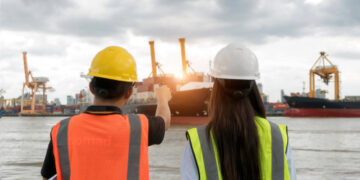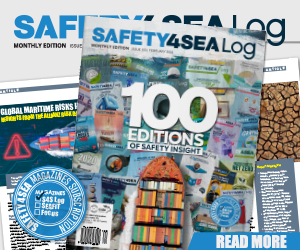Lessons from Marine Accident Reports
The UK MAIB has issued this yearSafety Digest including lessons learnt from maritime accidents. One case highlights how important is everyone onboard to keep alert of the mooring dangers
 The seafarer is routinely confronted withnumerous hazards when involved in mooringoperations. He/she must always be cautiousabout becoming complacent with, what is oftenseen as a day-to-day routine requirement.
The seafarer is routinely confronted withnumerous hazards when involved in mooringoperations. He/she must always be cautiousabout becoming complacent with, what is oftenseen as a day-to-day routine requirement.
High-powered tugs, rotating winches, ropesand wires under high loads present recognisabledangers.
To mitigate the risk, it is importantto ensure that sufficient attention is paid toproper and constant supervision and efficientcommunications between the bridge, mooringparty and the tug.
This will ensure that mooringoperations are properly controlled to reducethe risk of accidents.
- Those involved with supervising mooringoperations should position themselves sothat they have visibility of the wholeoperation.
- Do not be rushed. Careful control isfundamental to a safe operation.
- It is important that efficient communicationsare established between the bridge, mooringparty and the tug.
- The vessel’s freeboard, design of poopand forecastle decks, especially bulwarkheights, can make visual communicationsbetween the deck and the tug difficult -think how to overcome this and understandhow to tell the tug to stop operations inan emergency or when in doubt.
- Although the evidence in this case pointstowards a whiplash accident, there continueto be too many mooring accidents causedby crew standing in the bights of ropes.AVOID BIGHTS AT ALL COSTS.
- Advice on safe mooring practices can befound at Chapters 12 and 25 of the MCA’spublication – Code of Safe WorkingPractices for Merchant Seamen.
|
Source: UK MAIB, Safety Digest 1/2014
 The seafarer is routinely confronted withnumerous hazards when involved in mooringoperations. He/she must always be cautiousabout becoming complacent with, what is oftenseen as a day-to-day routine requirement.
The seafarer is routinely confronted withnumerous hazards when involved in mooringoperations. He/she must always be cautiousabout becoming complacent with, what is oftenseen as a day-to-day routine requirement.





























































